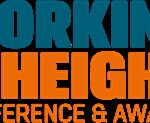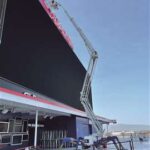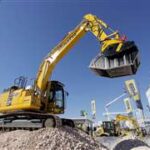Aerial work platforms (AWPs) have become a vital tool in industries that demand safe, efficient access to elevated work areas. Whether it’s installing lights on skyscrapers, performing emergency rescues, or conducting routine maintenance on overhead power lines, these machines have transformed the way tasks at height are approached. With their wide range of capabilities and increasing popularity across sectors, AWPs have proven to be indispensable in modern work environments, offering unparalleled flexibility, safety, and productivity.
Aerial Work Platforms: A Broad Spectrum of Lift Mechanisms
AWPs are designed to provide access to hard-to-reach areas, but the diverse ways in which they accomplish this task make them a versatile solution across multiple industries. The core difference between types of AWPs lies in their lifting mechanisms, which can vary from articulated booms to scissor lifts, each offering unique advantages for different tasks.
-
Articulated Boom Lifts: Flexibility for Challenging Spaces
Articulated boom lifts, often called knuckle-boom lifts due to their jointed design, are the go-to choice when a project requires both vertical and horizontal reach. These lifts can extend to significant heights and maneuver over obstacles, making them ideal for construction, maintenance, and even tree care. Their flexibility makes them especially useful in urban environments, where access may be restricted by surrounding buildings, trees, or other structures.One of the standout features of articulated boom lifts is their ability to work around obstacles with precision. Whether it’s navigating tight corners or extending over an obstruction, these lifts provide operators with a bird’s-eye view of their work area, ensuring that they can perform tasks with maximum accuracy and minimal effort. For example, when working on the façade of a high-rise building or installing signage, an articulated boom lift’s ability to reach over obstacles without moving the machine offers significant time and cost savings.
-
Scissor Lifts: Stability and Strength for Vertical Access
Scissor lifts are an entirely different breed of aerial work platform, designed primarily for vertical access. Unlike boom lifts, which provide both vertical and horizontal movement, scissor lifts are limited to only upward and downward motion. However, this vertical-only design gives scissor lifts a clear advantage when it comes to stability and weight capacity. They are equipped with a pantograph mechanism, which allows for smooth and controlled movement, lifting workers and materials to the desired height.These lifts are particularly useful for tasks such as window washing, maintenance, and inspection, where the worker only needs to access a single elevation. With their robust design, scissor lifts can support heavier loads, making them an excellent choice for carrying tools, equipment, and even small materials while elevating workers safely. Whether it’s indoor or outdoor work, scissor lifts provide the ideal platform for maintaining and repairing facilities, particularly when space is limited.
-
Spider Lifts: Specializing in Rough Terrain and Tight Spaces
As the name suggests, spider lifts resemble the spindly legs of a spider when deployed. Their unique design makes them the ideal choice for work in environments where other AWPs might struggle. Spider lifts feature extendable legs that provide a wide and stable base, allowing them to operate safely on uneven or rough terrain. The legs are either manually or hydraulically extended, depending on the model and size of the lift.These lifts excel in landscaping, forestry, and construction applications where uneven ground or steep inclines make traditional equipment unfeasible. They can be used both indoors and outdoors, offering a versatile solution for workers who need to access high points while navigating through tight spaces, such as in forests or between buildings. The compact nature of spider lifts allows them to maneuver through narrow pathways, making them the go-to option for jobs in challenging terrain or in congested areas.
The Expanding Applications of Aerial Work Platforms
While AWPs are commonly used in construction and maintenance, their utility extends far beyond these fields. Industries ranging from emergency services to telecommunications rely on AWPs to ensure that workers can access hard-to-reach locations safely and efficiently. By offering unique solutions for different challenges, AWPs are transforming industries across the globe.
-
Construction and Infrastructure: Building with Precision and Safety
In the construction industry, safety is always a priority, especially when workers are elevated to significant heights. AWPs provide construction crews with a safe, stable, and efficient way to perform tasks such as installing windows, repairing roofs, or building facades. Scissor lifts and boom lifts are the most common machines used on construction sites due to their ability to transport materials, tools, and workers safely to higher levels.These platforms not only save time by offering quick access to elevated work areas but also reduce the risks associated with traditional climbing methods, such as ladders or scaffolding. Furthermore, modern AWPs come equipped with additional features such as built-in electrical outlets, tool carriers, and integrated safety mechanisms, all of which contribute to a safer and more efficient working environment. The precision and flexibility of AWPs ensure that even the most complex projects can be completed without compromising safety.
-
Emergency Services: Rapid Response at Heights
When every second counts, especially in situations involving high-altitude rescues, aerial work platforms provide emergency responders with the access they need to save lives. Firefighters, in particular, rely on specialized AWPs mounted on fire trucks to reach victims in high-rise buildings during emergencies. These platforms allow rescue teams to quickly access difficult-to-reach windows, rooftops, or balconies, providing them with the tools and stability to rescue individuals from perilous situations.AWPs are also employed by emergency medical teams to reach injured people in remote or elevated locations. Whether it’s rescuing climbers from steep cliffs or extracting people from buildings with collapsed floors, AWPs provide the essential flexibility and security needed to carry out high-risk rescue operations. The ability to elevate emergency workers to dangerous heights while keeping them safe from falling makes AWPs an invaluable asset in life-saving situations.
-
Telecommunications and Utility Maintenance: Keeping Services Running Smoothly
Telecommunication companies and utility providers are some of the biggest users of AWPs, as they frequently require access to high points such as communication towers and power lines. AWPs provide the safest and most efficient method of reaching these elevated structures, allowing workers to perform tasks such as maintenance, repairs, and installations without the need for scaffolding or cranes.In the case of power line maintenance, workers use boom lifts to access utility poles or towers to inspect and repair electrical infrastructure. In remote or rural areas, AWPs allow technicians to quickly travel to the required location and begin work without the delay of traditional access methods. For telecommunications companies, AWPs are essential for maintaining cell towers, antennas, and other high structures that are critical to the functioning of communication networks.
Technological Innovations and Safety Advancements: The Future of AWPs
As the demand for AWPs continues to grow, so too does the innovation behind these platforms. Manufacturers are incorporating advanced technologies and safety features to make these machines more efficient, user-friendly, and environmentally responsible. From smarter control systems to enhanced safety protocols, the future of AWPs looks promising.
-
Enhanced Safety Features: Protecting Workers at Height
One of the biggest concerns when using aerial work platforms is worker safety. Manufacturers have responded by incorporating a range of safety features designed to prevent accidents and ensure a secure working environment. Modern AWPs are equipped with sensors that monitor the weight capacity and the balance of the platform. Overload sensors prevent the machine from operating beyond its safe weight limit, reducing the risk of tipping. Additionally, tilt sensors ensure that the platform will not extend on an unstable surface, minimizing the chances of the machine toppling over.Other safety features include emergency stop buttons, automatic self-checking systems, and fall arrest systems. Many AWPs also come with guard rails and harness points to keep workers secure while operating at height. These advanced safety measures are designed to give operators peace of mind, knowing that they are working with the most secure equipment available.
-
Electric and Hybrid Models: Eco-Friendly Solutions for the Future
As environmental concerns continue to rise, more manufacturers are producing electric-powered or hybrid AWPs. These eco-friendly models provide a sustainable alternative to traditional gas-powered machines, offering quieter operation, reduced emissions, and lower energy consumption. Electric-powered AWPs are particularly popular in indoor environments, such as warehouses or shopping centers, where exhaust fumes from gasoline-powered machines are not an option. Hybrid models provide flexibility for outdoor use, where greater power is needed.The increasing availability of eco-friendly AWPs aligns with the broader push toward sustainability across industries. As demand for green technologies continues to grow, AWPs will play an important role in helping companies reduce their carbon footprint while improving efficiency and productivity.




